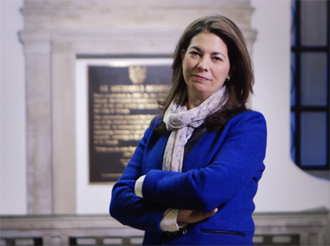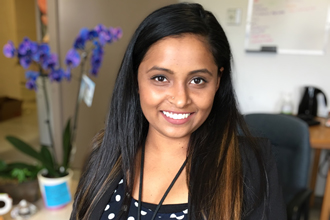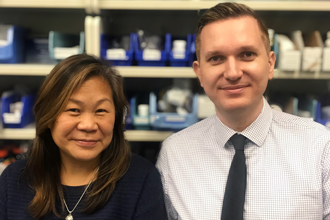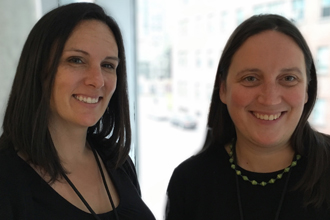When things go wrong: Learning from patient safety incidents

By Anne Trafford, vice-president Quality, Performance and IT

Anne Trafford, vice-president Quality, Performance and IT
St. Michael’s first responsibility and priority is to keep our patients safe. We are relentless in our commitment to eliminate unnecessary harm.
How do we ensure a safe system? Part of this work is proactive. Teams across the hospital are constantly developing and implementing new evidence-based policies and initiatives to mitigate and prevent patient-safety risks. Great examples of this work are easy to find: our annual quality and patient-safety target setting, our ongoing education and simulation activities, and our initiatives to eliminate unnecessary harm are just a few.
However as care providers we have an additional, equally important responsibility: to be vigilant and reactive. We must catch system failures and make changes – the right changes – as soon as possible when things go wrong.
To celebrate Canadian Patient Safety Week 2017, we are sharing some of our processes and infrastructure for the reactive side of patient safety. The three examples below illustrate these processes: the immediate follow up after an incident or identification of a hazard, the quality-improvement and learning processes that follow, and the positive changes that happen as a result.
Finally, I’d like to share the powerful words of a family member of one of our patients. When the worst does happen and a patient is harmed by a mistake or system failure, we must support and involve the patient and family through all the processes above. Since his father’s passing, Don joined our team as a Patient and Family Advisor. His messages are now part of our training sessions for Incident Analysis Teams and have been shared with clinicians across St. Michael’s.
Watch the video below.

Vasuki Paramalingam (clinical leader-manager, Inpatient Mobility)
Vasuki Paramalingam: “We have a good reporting culture at St. Michael’s; everyone wants to do what they can to keep our patients safe.
For example, we just got new patient lifts and slings. There was an event where we suspected that the sling had led to the development of a pressure ulcer in one of our patients. The nurses are able to apply preventive measures in the future, but we still entered it into the Safety and Learning System [St. Michael’s electronic incident reporting system] for a formal review. This way we can assess if this problem is occurring in other departments, and catch any trends across the organization.
If an incident is reported on my unit, the unit’s educator and I always assess the clinical documentation and the timing of the incident, and then follow up with the people involved.
It’s not about who did what, it’s really about understanding why it happened and what needs to change to prevent it from happening again. That’s why it’s important to get everyone’s perspectives and involve the educator – they can bridge any knowledge gaps.
Sometimes these incidents happen because there is a gap in the system – an automatic process didn’t happen as it should, or there’s a barrier to communication. Sometimes it’s an error someone’s made. Either way, I look at every incident as an opportunity to learn. The Safety and Learning System is a great way to flag hazards, understand the root causes and make changes to prevent harm.”

Elaine Tom (pharmacy professional practice leader) and Norman Dewhurst (clinical pharmacy specialist/leader)
Elaine Tom: “Pharmacy Safety Rounds started as a six-month research project, but the response was so great that they’re now central to our safety strategy. We’ve been running them for more than five years now.
The first thing we did was develop ground rules. We talk about every incident as a group, but we don’t publicly identify anyone. We don’t point fingers. It’s more about sharing that we all need to be careful when we see this or that type of order, because someone got tripped up and an incident happened. And then we have an open discussion about how to prevent this type of problem from coming up again.
I think the rounds have been so successful because people really want to know what the potential hazards are, so that they can be part of the safety net. It has improved our culture of safety and like all clinicians, it’s really important for us to be good at what we do.”
Norman Dewhurst: “Before Pharmacy Safety Rounds, we do a root-cause analysis for every medication-safety incident that’s entered into the Safety and Learning System. The analysis helps set the stage and guide our discussions.
After rounds, we bring the recommendations to a smaller work group that fleshes out and implements our suggestions. If rounds are about exploring the options, the work group looks at how feasible and appropriate these options are. For example, do we need a new process, better tools or more education?
Once the change is designed and implemented, we present it to Pharmacy Council and share it with the pharmacy team to close the loop. When people can see an incident discussed at Rounds and then see the changes to policy and practice that result, it encourages more reporting. It’s powerful to see these things come full circle and create a safer system.”

Katey Knott (manager, Collaborative Practice and Education) and Colleen McNamee (manager, Corporate Nursing Education)
Colleen McNamee: “If a St. Michael’s patient has a fall in hospital that results in an injury, an Incident Analysis Team follows up right away and conducts a formal review. Our corporate Quality Improvement Council tracks the reviews and approves the recommendations that result. The Council also looks at the themes and trends overall and takes on the larger gaps in the system.
Although St. Michael’s falls rates are excellent – among the lowest in the region – the Council believed we could do more as an organization. They recommended that the hospital develop a corporate strategy to use falls risk mitigation tools, including developing guidelines for how we use bed-exit alarms and low beds across inpatient units. Katey and I led the project, as members of the Falls Steering Committee.
It wasn’t just a matter of putting the 200 new beds in the bays and plugging them in. To be effective, the new tools had to work together with our existing Preventing Falls is SIMPLE program such as risk assessment, transfer of accountability, clinical documentation and rounding. We developed new guidelines, education and processes and worked with the interprofessional teams to implement them along with the new beds and alarms. It was a huge project, and an incredible team effort.”
Katey Knott: “Alarms are only useful if they’re used on the right patient at the right time – otherwise there’s just alarms going off everywhere and they stop being meaningful. So we needed to make it clear which patients would benefit from that early-warning system, which wouldn’t, and then make it easy for everyone to tell the difference.
I think the key to our success has been our interprofessional approach. Follow-up and feedback was crucial. After we rolled out the guidelines and tools, we went back to the units and held validation sessions. It was an opportunity to say thank you for your feedback so far, and to make sure the tools and guidelines made sense to everyone. It was another opportunity for education and awareness, and helped reinforce how important these changes will be for our patients. It’s been really gratifying to work on something that I know will have such an important impact on patient safety.”
About St. Michael’s Hospital
St. Michael’s Hospital provides compassionate care to all who enter its doors. The hospital also provides outstanding medical education to future health care professionals in more than 29 academic disciplines. Critical care and trauma, heart disease, neurosurgery, diabetes, cancer care, care of the homeless and global health are among the Hospital’s recognized areas of expertise. Through the Keenan Research Centre and the Li Ka Shing International Healthcare Education Centre, which make up the Li Ka Shing Knowledge Institute, research and education at St. Michael’s Hospital are recognized and make an impact around the world. Founded in 1892, the hospital is fully affiliated with the University of Toronto.
